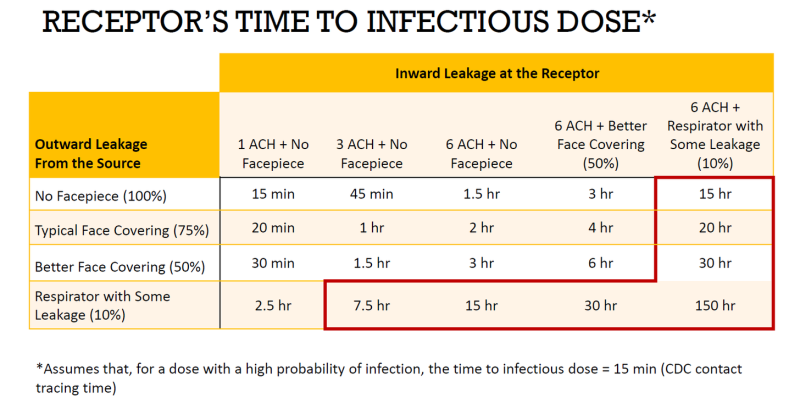From Brownstone Institute, "A Fantasy of Virus-Free Air: " by Steve Templeton, November 19, 2021:
To give an idea of how ventilation increases the time to infectious dose compared to cloth (typical) masking, below is a table created using model calculations created by Dr. Lisa Brosseau, an expert with over 30 years of experience in PPE and particle filtration:

Although this table was created to illustrate the potential for high-quality respirators to decrease time to infectious dose (for workers in high-risk situations), you can also see the advantages of increased ventilation. As ACH [Air Changes Per Hour] increases, the time to infectious dose increases much more significantly than with face coverings, with differences that can be measured in hours for ventilation compared to minutes for masking. [Emphasis Added]
Increasing indoor ventilation is an effective strategy because airborne transmission is a significant route for SARS-CoV-2 spread, while surface transmission is not. Airborne virus may remain suspended in small aerosol particles for hours, rendering typical face coverings ineffective (and extended use of N95-type respirators is simply not practical). The 6-foot rule for social distancing, based early estimates of surface of large droplets, also becomes increasingly arbitrary in an airborne transmission scenario. These facts make adjustments to indoor ventilation an attractive strategy for building engineers seeking to decrease the risk of airborne virus transmission.
No comments:
Post a Comment